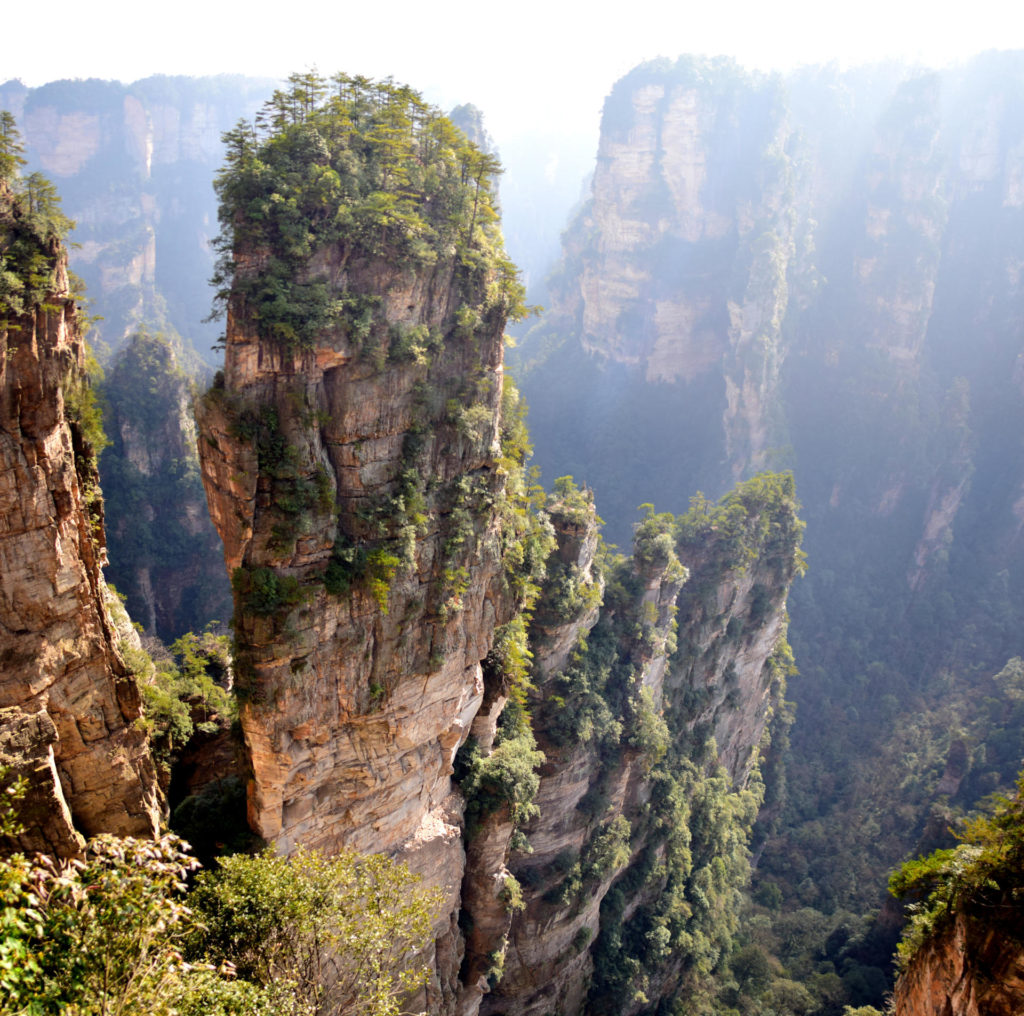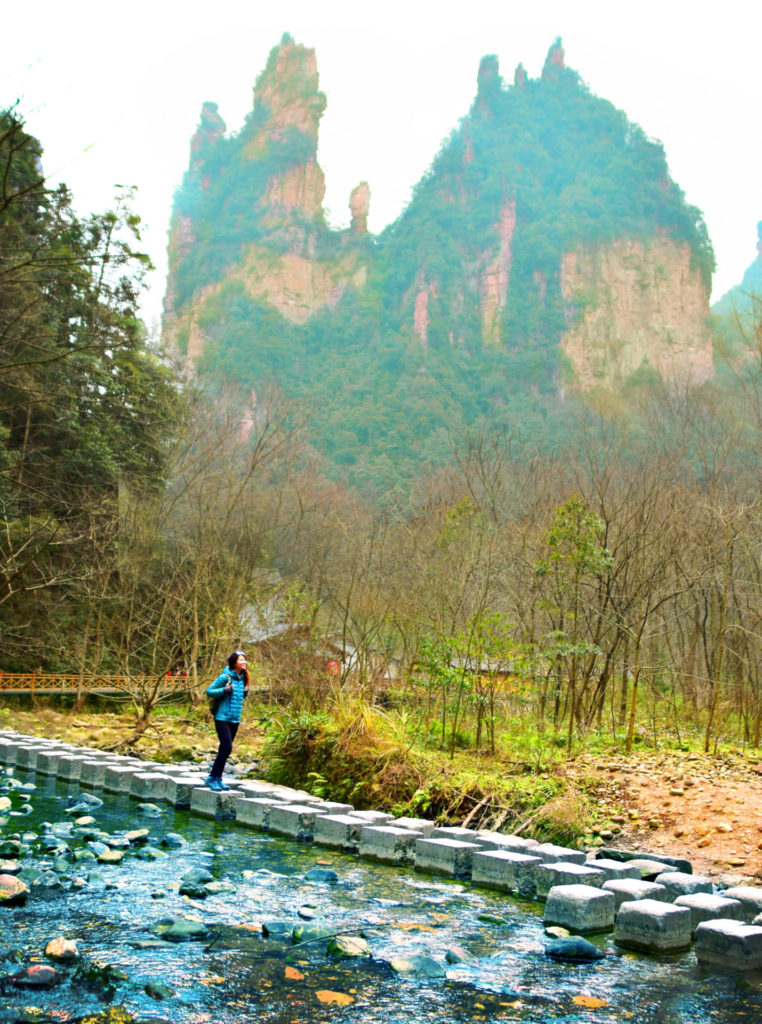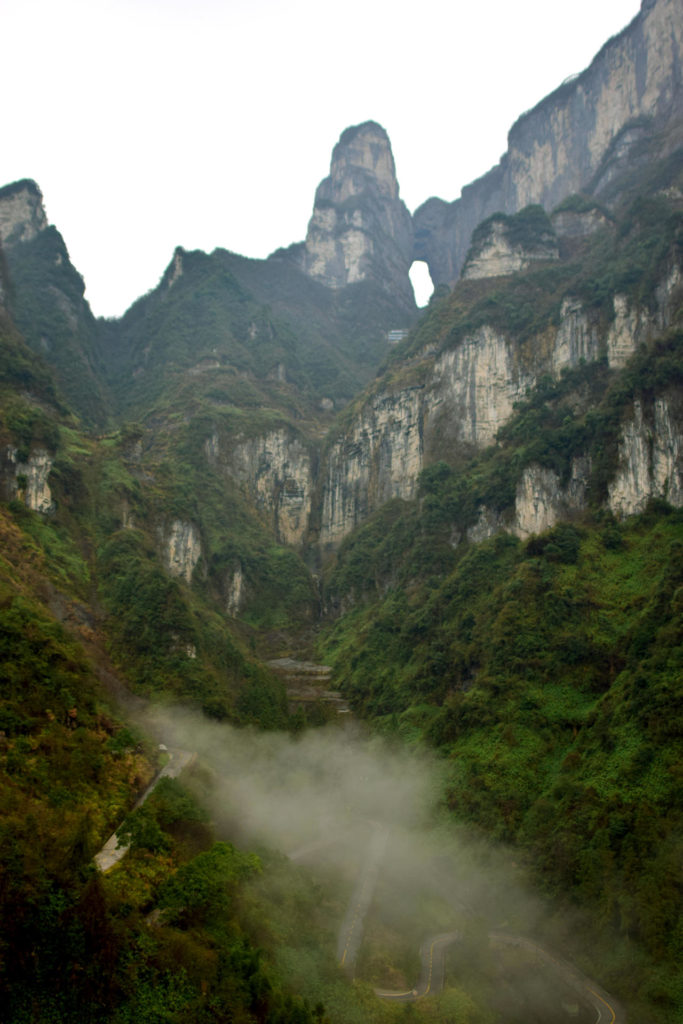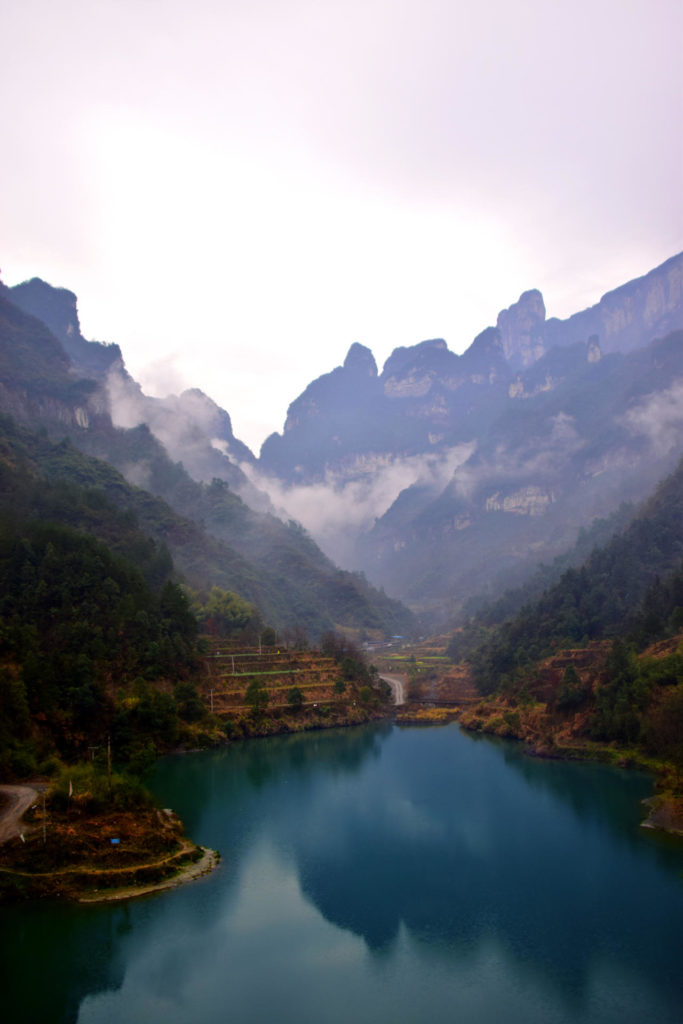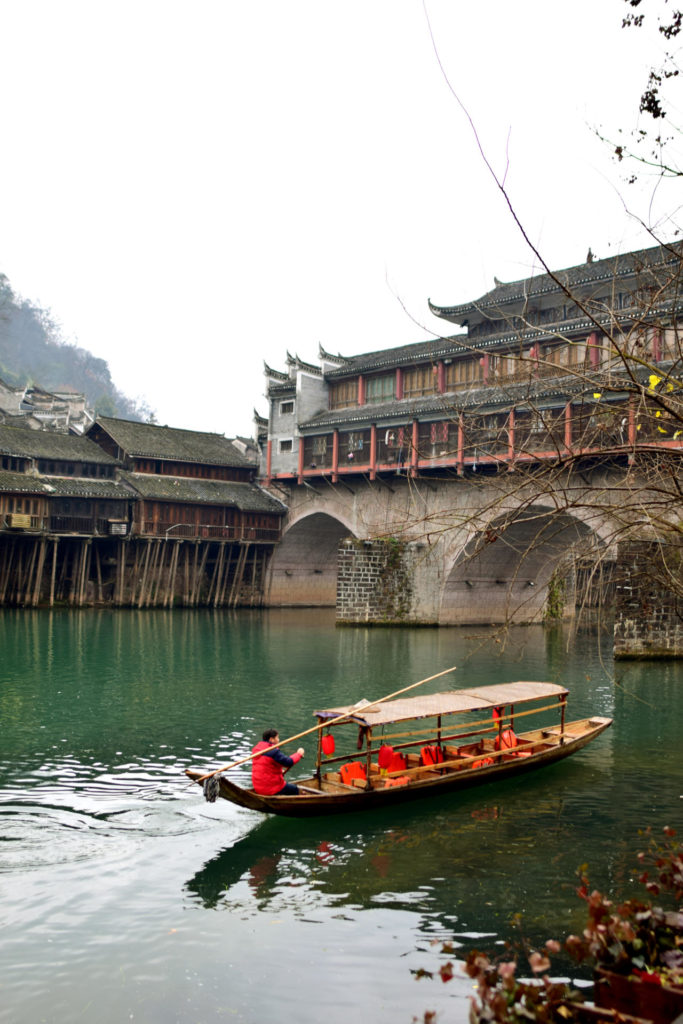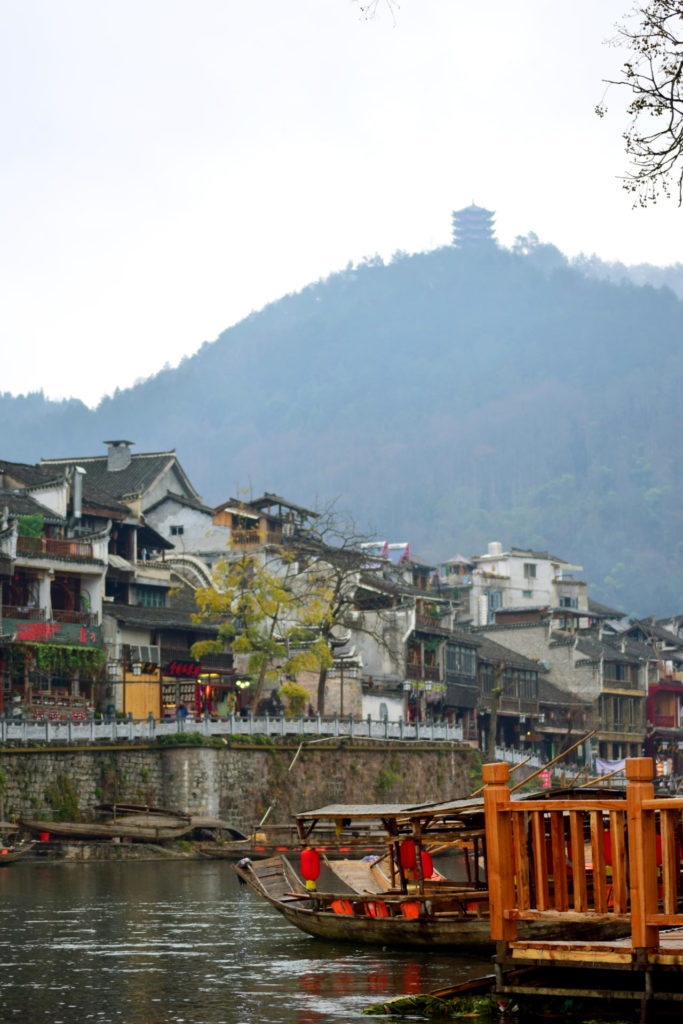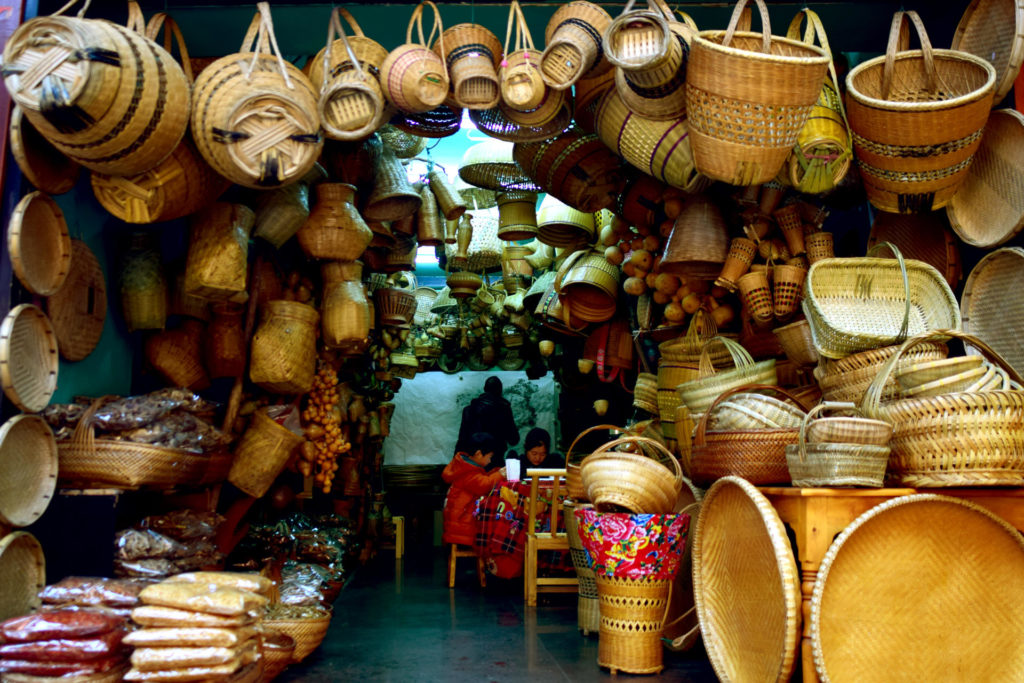A crisp fog clears, revealing islands “floating” in the clouds. Massive, dangerously narrow sandstone columns seemingly defy gravity as they rise up from the canyon floor—so high clouds and mist form between these giant pillars. It feels like a scene straight out of the 2009 Hollywood blockbuster “Avatar,” and, actually it is. The sets for the fantasy world were designed after Zhangjiajie National Forest Park.
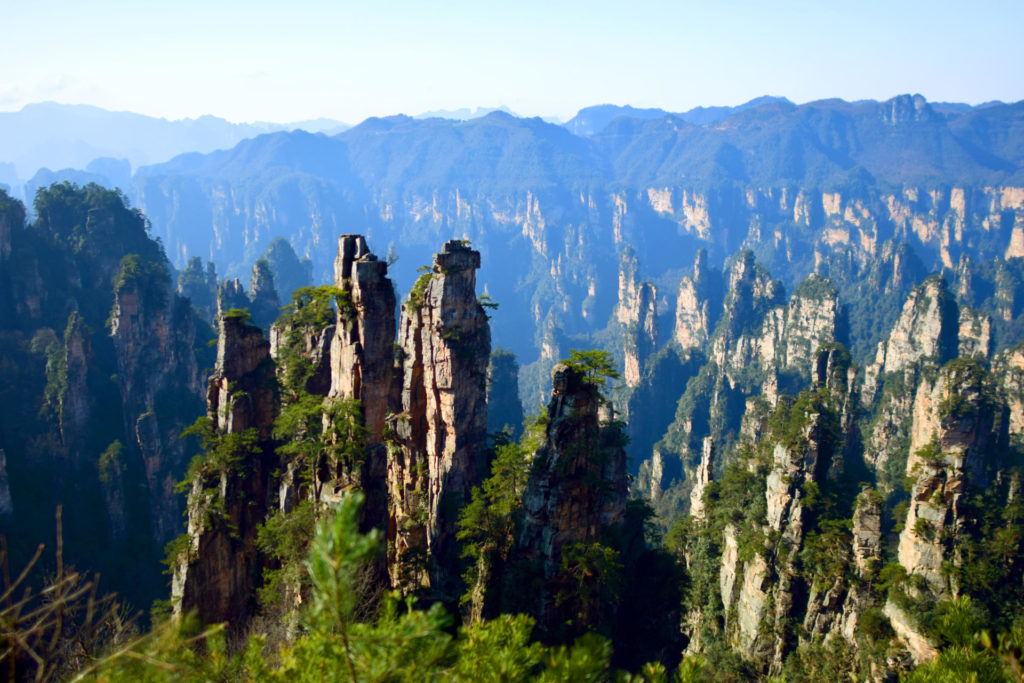
With China’s flourishing economy and push towards tourism, the country has never been more accessible. Travelers are venturing beyond Beijing and Shanghai, going further inland to seek unspoiled countryside views and mountainous landscapes often depicted in traditional Chinese paintings.
If it’s your first time visiting China, the southern central province of Hunan is an excellent introduction to China’s outdoors. With craggy mountainous ranges, serpentine rivers and traditional villages, this is the ancient China many have imagined.
China has been known for ostentatious projects, so it’s no surprise the country boasts the world’s longest cable car, longest and highest glass-bottomed suspension bridge, highest glass-bottomed walkway and highest elevator—all of which you’ll find here in Hunan.
Islands in the Sky
With more than 3,000 sandstone pillars, ravines, caves and lakes, Wulingyuan Scenic Area is a geological treasure. It spans more than 26,000 hectares, so its impossible to cover it all in just one day. The region includes Suoxi Valley Nature Reserve, Tianzi Mountain Nature Reserve, Yangjiajie Scenic Area and the famous Zhangjiajie National Forest Park. The park was designated a UNESCO World Heritage Site in 1992, but really peaked interest after “Avatar” was released. Today, millions flock to see the iconic Hallelujah Mountain. The viewing point can get crowded, but it is a must-see, especially with its adjacent natural rock bridge.
The Tianzi Mountain in the north is similar to Zhangjiajie except it is higher and the pillars narrower. Located at 1,182 meters, this is the best place to photograph the “islands” shrouded in mist and clouds.
To the northeast, the Suoxi Valley Nature Reserve features Baizhang Valley—popular with hikers—Yellow Dragon Cave and Baofeng Lake, a manmade reservoir built for irrigation.
Yangjiajie is the newest addition to Wulingyuan and has steeper climbs compared to the rest of the park. While the pillars here are not as eroded, the forest is denser. A narrow iron staircase connects you to One Step to Heaven, a 1,130-meter mountain peak.
There are more than 149 types of animals in this park; while you will definitely run into greedy monkeys along the trails, you might also find golden pheasants, giant salamanders and musk deer.
To attract more tourists, easy-access walkways, roads, cable cars—and even an elevator—have been built around the more popular structures so you can expect crowds during peak season. The ideal way to enjoy this park is to get a three-day pass, which allows you to hike quieter spots away from the tour buses. You can also homestay with the local Tujia ethnic group. Bus tickets typically cost around 225 yuen (¥3,700) but are half price at 115 yuen (¥1,900) during the off season from December to February. Note that driving is only allowed for locals living in the park. Free shuttle buses also run within the park.
If you’re not staying in the park, you may want to stay in the Wulingyuan District. This quaint tourist town is a convenient place as restaurants, shops, hotels and even the Wulingyuan Scenic Area entrance is a ten to fifteen-minute walk.
Heaven’s Gate
As you fly into Zhangjiajie Hehua Airport, you’ll see jagged limestone peaks lining the horizon. The tallest of these is the 1,519-meter Tianmen Mountain. For easy, jaw-dropping views, this is the place as the only legal way up is by cable car. Yet this isn’t your average gondola: the seven-kilometer ride makes it the world’s longest cable car. Thirty minutes after stepping aboard you’re delivered to the peak where you can walk around, test your fear of heights on the glass-bottomed walkway or take the escalator down to Heaven’s Gate Cave.
Heaven’s Gate Cave is the world’s highest cave of its kind. Visitors can climb 999 steps (in Taoist tradition, nine signifies the emperor and thereby the son of heaven) to reach this gaping hole on the side of the mountain. Erosion created the cave in 263 A.D. This natural phenomenon as well as its height has made it a popular spot for the World Wingsuit Championships, when extreme athletes fly through the cave.
During the warmer months (March to November), visitors can take a bus up the thrilling 99 Bends Road–not recommended for those prone to car sickness. With its hairpin turns and altitude, you may want to opt for a view of the 99 Bends from the cable car. The road ends at Heaven’s Gate Cave. Note both the cave and the road are closed during winter due to ice.
Keeping up with the glass-bottomed craze, Zhangjiajie Glass Bridge is also just an hour drive away. At 430 meters long and 300 meters high, the world’s longest and highest glass suspension bridge is built over Zhangjiajie Grand Canyon. It’s unnerving to walk the plank with nothing but thick glass between you and the canyon far below. Bungy China recently launched the world’s highest commercial bungee jump from this bridge, with its inaugural jump held in spring 2018.
Phoenix County
A four to five-hour drive from central Zhangjiajie is Fenghuang Phoenix Ancient City. Literally meaning “phoenix county,” Fenghuang has exceptionally well-preserved buildings dating back to the early 1700s. Home to the Miao and Tujia ethnic minorities, this traditional town is noted for diaojiaolou, houses built precariously on stilts along the Tuojiang River. Twenty ancient streets with more than 200 preserved residences include Huangsiqiao Castle, Xiangxi Border Walls, Chaoyang Palace and the former residence of Shen Chongwen, one of China’s greatest modern writers.
Activities in town include food stall-hopping, shopping and a bustling nightlife scene. Photographers are also drawn to the phoenix-inspired architecture. Bridges and stepping stones connect Tuojiang River and you’ll often find Chinese visitors getting their engagement shoots done here. You can also take a short ten-minute river boat cruise to view the stilt houses from the river and local fishermen.
Getting There
There are at least four flights a day from Shanghai Airport to Zhangjiajie Airport and one flight from Beijing. There are also plans for Zhangjiajie to be a stop on the high-speed train line. Another option is to fly into Changsha Airport. Changsha is Hunan’s capital and a major business hub. Zhangjiajie and Fenghuang are a five-hour drive from Changsha (in different directions). China does not allow foreign non-residents to rent cars or drive. However, taxis and buses are readily available in Zhangjiajie.
Okichina Travel Service offers small affordable tours to the Zhangjiajie Region as well as longer trips to Beijing and Shanghai.

